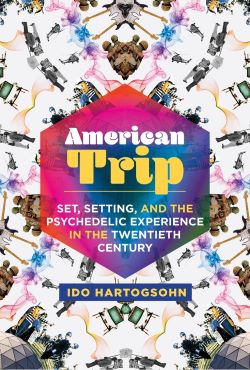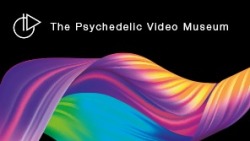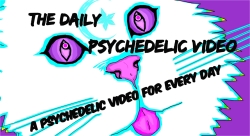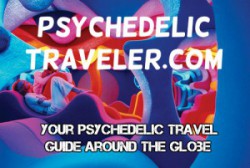Why Freud never got addicted to cocaine, how nitrous oxide shaped 19th-c. philosophy and what chastised Aleister Crowley’s boastful individualism. Mike Jay’s Psychonauts: Drugs and the Making of the Modern world is a rare delight. Check out my review in the Journal of Psychedelic Studies.
I’m excited to announce the publication of a new book chapter titled “Psychedelics in Israel: A brief history”, which I published together with Itamar Zadoff as part of a new book by MIT Press titled Expanding Mindscapes: A Global History of Psychedelics.
This book opens a new chapter in psychedelic historiography. Psychedelic scholars have thoroughly scoured the American history of psychedelia for the decades. Now, psychedelic scholarship is waking up to the existence of other psychedelic histories across the world. The new book contains 20 chapters that deal with such subjects as capitalist ayahuasca rituals in communist China (Alex Gearin), the relationship between phenomenology and psychedelics in 1930s France (Gautier Dassonneville) and queer-psychedelic rituals in Karachi, Pakistan (Manal Kahn). Mr. Zadoff and I were accorded the honor of writing up Israel’s psychedelic history.
It was a fascinating and fun text to work on. It sent us to the first Israeli LSD experiments which took place in psychiatric hospitals in the early 1960s, through a long series of bohemian, colorful figures including the poet Yonah Walach, poet David Avidan, and poet/mystic/guru Rina Shani, through the psychoactive rivalry between the stoned Sabres of the Lul group and the subversive, radical hallucinatory spirit of the internationally-oriented Third Eye Group led by Jacques Katmor, through holocaust survivor’s Ka-Tsetnik’s psychedelic visions of the astral Auschwitz, and through to the meteoric rise of the Israeli psytrance scene the rise of Ayahuasca ceremonies, and the development of an extensive Israeli psychedelic community and ecosystem. Along the way arose complex questions on the relationship between drugs and Zionism, escapism, the alternativeness, and normativity of psychedelics in Israeli culture.
It’s a weird time to be publishing this paper, just two months after an unprecedented event in psychedelic history: the massacre of around 350 Israeli ravers, many of them psychonauts under the influence of psychedelics, at the hands of Hamas terrorists in the Nova Music Festival on October 7th,, with thousands of other injured or suffering trauma. I publish this paper with the hope that this community will be able to heal itself in the wake of these events and with prayers for peace to come to our aching part of the world.
You can read a preprint version of the article using this link
Academic life moves in ebbs and tides. After publishing a trilogy of papers on set and setting in 2016-2018 I’ve went into a hiatus in which I focused mostly on my book American Trip which appeared in 2020 and had no further publications until last year’s Set and Setting in the Santo Daime, which appeared until 2021.
I’ve been changing gears, and the past couple of months have seen the publication of 3 new papers which build on my previous work and continue to deepen the exploration of the role of in psychedelic experience and culture, while also embarking on new directions inspired by media studies.
I’m quite proud of these new papers, so taking the liberty to introduce them here, since I think they would be valuable for anybody interested in thinking about psychedelics and set and setting in new perspectives.
Virtual Daime: When Psychedelic Ritual Migrates Online
This first paper, which was published by Frontiers in Psychology is actually a sequel to my 2021 paper Set and Setting in the Santo Daime. This one builds on my description of the Santo Daime ritual and examines its transformations as daime rites moved online in the context of the 2020-2021 Covid-19 pandemic which forced many daime communities to reinvent themselves in virtual form. I’ve had a lot of fun writing this paper, particularly since I’ve long been interested in thinking about psychedelics as media and how they interact with other types of media (like digital media).
Many of my findings are bleak. Social anxiety shot up in virtual space as did concerns regarding consumerism and commodification, among other things. The limitations of digital technology became all the more evident under the influence of psychedelics. However, there was an upside too. Virtual daime rituals allowed people to continue their spiritual work at a time of social distancing and isolation. Some even had transformative spiritual experiences in the virtual astral. Moreover, virtual rituals created a global community and allowed the Santo Daime brotherhood to realize its plans to celebrate the 100th year anniversary of its founder in a radically different way, which unexpectedly enabled the entire Santo Daime flock to come together. My research demonstrates how media adds another psychoactive layer that shapes experiences with psychedelics.
Technology and Addiction: What Drugs can Teach us about Digital Media
I’ve had even more fun writing this second paper Technology and Addiction, which was co-authored together with my good friend and close intellectual ally Amir Vudka from the Media Studies department at the University of Amsterdam, and published by Transcultural Psychiatry. This one takes another step in linking psychedelic theory and media theory as it merges insights from the psychedelic study of set and setting with insights about the psychoactivity of digital technologies and late-stage capitalism.
It’s a highly interdisciplinary endeavor bringing together media studies, psychedelic studies, addiction studies, cultural theory, political economy and science and technology studies. The upshot of the paper is the idea that thinking about set and setting of our narcotic digital use may offer new perspectives on harm reduction, but that this may force us to rethink the capitalist system as well.
A lot of my writing over the past decade was about broadening our ideas of set and setting from the individual and concrete to the cultural: realizing that psychedelic experiences are shaped not just by the immediate conditions surrounding psychedelic use but also the dynamics and features of the surrounding culture. American Trip followed just this sort of thread as it traced the way 1960s American society shaped the psychedelic experience at the time (and since).
However, no culture is monolithic. Every culture is composed of various subcultures. In the context of 1950s and 1960s America there were 7 distinct sub-cultures with their distinct beliefs and approaches to psychedelics. These produced 7 distinct types of set and setting, which functioned like modalities for the psychedelic experience. My paper builds on research from American Trip to explore the idea of psychedelic modalities, or micro-climates of set and setting, and how the concept my serve as a heuristic for thinking about experiences with psychedelics.
The Mind Foundation produced a 20-minute film about my book American trip: Set, Setting and the Psychedelic Experience in the 20th Century and my research on the relationship between set and setting and placebo. An impressive endeavor, including animations, and inspired elucidations by creator Ada Jaarsma, a professor of philosophy specializing on the topic of placebo. This is accompanied by a profound text by Prof. Jaarsma about the implications of my work. I’m madly flattered, to be honest. You can find the text+film, here.
I’m incredibly proud to report my new paper Set and Setting in the Santo Daime was published yesterday by Frontiers in Pharmacology.
The new paper offers a high-resolution analysis of the multi-dimensional intricacies of the entheogenic experience in the Santo Daime ayahuasca religion, discussing many elements from the unique elements shaping expectation and intention, all the way to musical, visual and olfactory and kinetic factors, and leading to a discussion about all of the ways set and setting can go wrong in such a carefully calibrated environment.
I put a lot of work and thought into this one, and the paper should be interesting not just for people interested in Santo Daime. It presents a highly nuanced treatment that can provide a template for investigations of set and setting in many contexts.
The paper is open access. You can read it here, and I hope you enjoy it.
Immensely proud to contribute a paper on psychedelics and interspecies relations in a new and incredibly gorgeous book titled Eco Noir: A Companion for Precarious Times. This inspiring project brings together a spectacular collection of essays tackling the concept of interspecies relations and calling for a rapproachment with the non-humans inhabitants of the earth at a time of great planetary crisis. My paper Plant Allies: Agents and Ambassadors follows the history of human-plant-fungi-alien relations within the world of psychedelia, from shamanic exchanges with plant entities, to the inter-species communications established by psychedelic adventurers into alien realms like John C. Lilly, Terence McKenna, and Diane Reed Slattery, leading all the way to the crucial question of cognitive freedom and why these interspecies relations are so important.
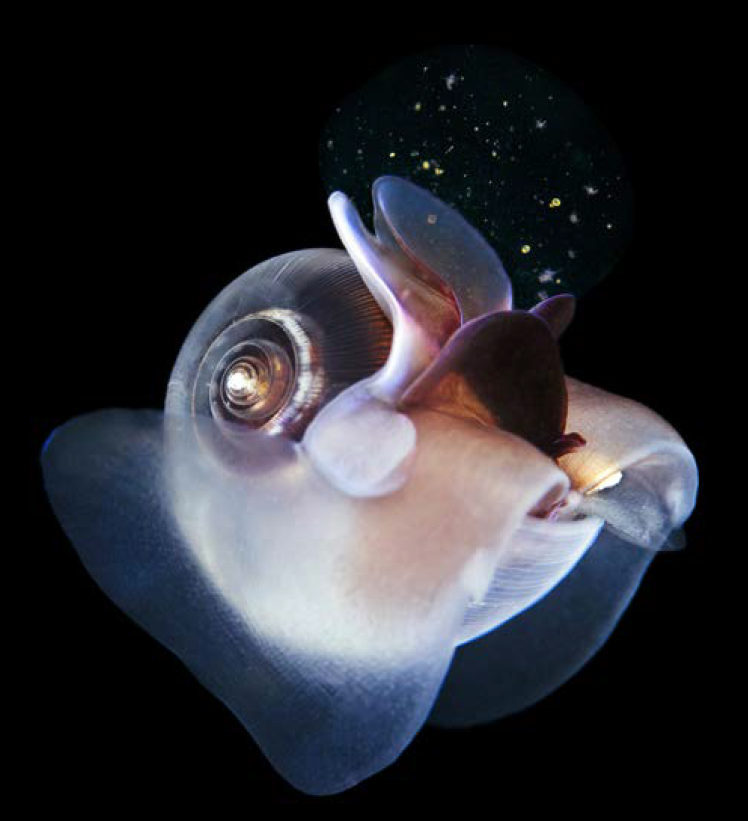
I truly appreciated the opportunity to approach the history of psychedelia through the lens of interspecies communications between psychonauts and entities. And I’m doubly blessed that my paper appears alongside a brilliant essay titled Bug Wars: Military-Cinematic Campaigns Against Space Insects by my dear friend Amir Vudka (and a host of other original and accomplished essays). I’m triply blessed that our contributions appear alongside dazzling art works that contemplate on the current acute moment in human-non-human relations (even the very wording of this phrase makes you uncomfortable and demonstrates the shocking anthropocentrism of our thinking about these ‘non-humans’).
This truly exquisite project is the brainchild of Jack Faber and Ana Shraer, published by the Academy of Fine Arts at the University of the Arts Helsinki. You can visit the exhibition and buy the book at or download a copy of the pdf here.
Artwork (from Eco Noir): Alexander Semenov, Sea butterfly 10, 2018, C-print, 90×90 cm
Comments and responses to the themes and ideas of American Trip: Set, Setting and the Psychedelic Experience in the 20th Century.
Speakers
8:40 Leor Roseman: Psychedelic peace-building. occupation, liberation, messianic consciousness and Leary’s shadow.
30:00 Uri Shwed: From American Trip to global experience. Symmetrically analyzing drug users experiences.
53:30 Yahav Erez: Stay at home and trip. Recreational use in times of a pandemic.
1:14:30 Tomer Persico. The ethics of consciousness. The Normative element in our set and setting.
1:36:00 Nico Teen – Psychedelic Music Performance
2:03:00 Erik Davis. Setting up set and setting.
2:19:00 Nancy Campbell. The ineffable intensification of ontology.
2:36:45 David Dupuis. The Socialization of hallucination. Anthropological insights on set and setting.
2:56:00 Nicolas Langlitz. Political psychopharmacology.
3:07:15 Closing words (Ido Hartogsohn) and discussion with panelists
Evening host: Noah Efron Psychedelic videos are from the Psychedelic
Video Museum https://www.psychedelicvideomuseum.org/
Shmulik Kraus – Shishi Cham / Ori Toor – Vial of Sound / The Geula Party – Choosing Good / Guy Treffler – Not Mine / Victoria Hanna – 22 Letters / Ori Toor – Kingdom Crumbs

To join the event on Facebook Live click here at the scheduled time.
Description
How does culture shape psychedelic experiences? And how do psychedelics shape human cultures? Has the psychedelic experience transformed with the passing of time? How does it change between different times and places?
Psychedelics and Culture is an evening in celebration of the publication of American Trip: Set and Setting and the Psychedelic Experience in the Twentieth Century by Ido Hartogsohn. Eight leading scholars who study psychedelics from diverse perspectives (sociology, anthropology, neuroscience, STS, religious studies) will speak to the cultural dimensions of psychedelia and offer commentary on the themes, ideas and questions presented in American Trip. Israeli indie group Nico Teen will provide psychedelic sounds, and The Psychedelic Video Museum will add some indispensable kaleidoscopic colors.
First Session
18:30-20:30 Jerusalem Time (GMT+2), 11:30-13:30 EST, 8:30-10:30 PST
Speakers:
Leor Roseman. Center for Psychedelic Research, Imperial College London
Uri Schwed. Department of Sociology and Anthropology, Ben Gurion University
Yahav Erez. The Graduate Program in Science, Technology and Society, Bar Ilan University
Tomer Persico. Shalom Hartman Institute. UC Berkeley Institute for Jewish Law and Israel Studies
The incredible sounds of NICO TEEN
Second Session
20:30-22:00 Jerusalem Time (GMT+2), 13:30-15:00 EST, 10:30-12:00 PST
Speakers
Erik Davis. Independent scholar and author of High Weirdness.
Nancy Campbell. Department of Science and Technology Studies, Rensselaer Polytechnic Institute.
David Dupuis. Department of Anthropology, Durham College.
Nicholas Langlitz. Department of Anthropology, New School for Social Research.
Closing words:
Ido Hartogsohn
To join the event on Facebook Live click here at the scheduled time.
This piece was originally published in the Lucid News.
***
After taking a trip with psychedelics in the 1960s, our culture is now at it again, but if we want this one to be epic and not a bummer, we need to work on our intention
If you’d have met anyone from the year 2000 and told them where psychedelics would be in 2020, they would have laughed at you and told you to get out of the room.
In 2020, after long decades of derision and persecution, psychedelics are well on the way to becoming mainstream. Psychedelic research is enjoying a renaissance, and the volume of published research on psychedelics increases exponentially, overhauling the golden days of the sixties. A growing number of public figures and celebrities openly confess their personal debt to psychedelics, and books on the topic land at the top of international best-seller lists. In 2020 Westerns in search of healing are flocking to the amazon to seek shamans, and medicine men are becoming celebrated figures in a burgeoning international entheogenic scene. Meanwhile, decriminalization and legalization initiatives are winning ballots across the globe, and drug-war type opposition to psychedelics is quickly evaporating as government agencies, drug companies and mental health professionals all join the growing furor, hailing psychedelics as paradigm-breaking, revolutionary tools for healthcare.But there is a poignant contradiction to observe. As psychedelics become ever more popular and mainstream, the world is becoming increasingly destabilized, demoralized and desperate. Anti-democratic authoritarian leadership has taken root across many parts of the globe, and a severe climate crisis is approaching, while humanity is seemingly unable to settle on any appropriate response. Old economic and political paradigms are going bankrupt with no alternative on the horizon, and on top of it all, a new pandemic is raging across the globe wreaking havoc on global societies and their ways of life.
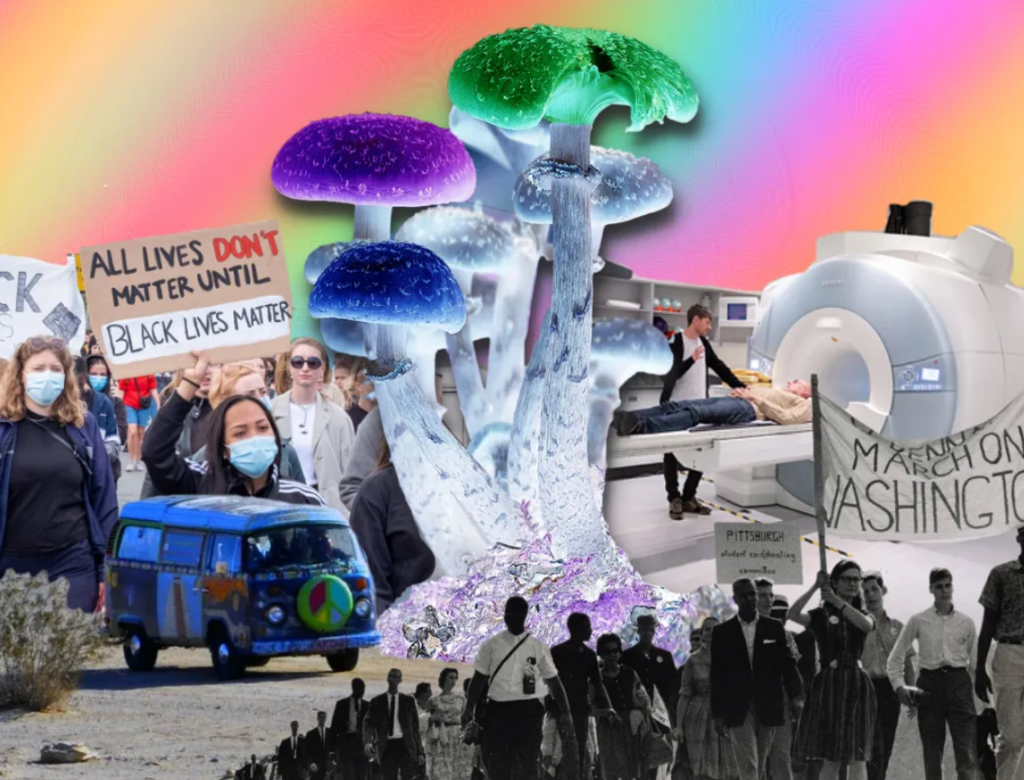
Observing this psychedelic efflorescence accompanying a rapidly deteriorating world one can’t help but be reminded of psychedelic chemist Sasha Shulgin’s theory about the role of Eros and Thanatos in the history of psychedelics and humanity. History, Shulgin believed firmly, is defined by a delicate balance between Eros, the drive to life, and Thanatos the drive to death. Whenever movement occurs in one direction, Shulgin argued, it will soon be compensated by a pull to the other side. Thus, for instance, the 1896 discovery of uranium was soon followed by the 1897 discover of mescaline by Arthur Heffter, and the 1942 discoveries that led to nuclear weapons were quickly followed by the discovery of LSD in 1943.
Shulgin’s eschatological musings are not an outlier in the history of psychedelic thought. Similar notions about the prophetic role of psychedelics at times of crisis have been central to the writing of countless psychedelic authors from Terence Mckenna to Daniel Pinchbeck. In other words, the sudden rise of psychedelics at an historical moment in which humanity is facing its gravest dangers since many decades appears like the realization of one of the most deeply entrenched motifs of messianic psychedelic lore.
And yet, as psychedelics are finally their making entry at the scene, the mood on the ground does not appear as celebratory as one might expect. And part of the reason, expectedly perhaps, has to do with the new challenges that emerge as psychedelics migrate from the fantastic land of Oz and become real-world objects with complex sociological, cultural, and political dimensions.
Psychedelics Society at a Crossroads
After decades of blessed obscurity at the caring hands of a select group of sworn, trusted idealists, psychedelics are now entering a wider arena and attracting interest from business interests. This in itself is expectable and arguably even positive development, however it signifies the intrusion of the norms of extractive capitalism into the world of psychedelia, and an attempt for the co-optation of psychedelia by big-pharma. In a grander sense, this also creates a puncture at the countercultural heart of psychedelia. For years, the world of psychedelics understood itself as centered around certain types of ideas and values of community, sharing and cooperation. All of these seem compromised once ruthless businessmen like Peter Theil begin intervening in the future of psychedelic medicine.
The response to these developments by (what, at least in former, innocent times, was referred to as) the psychedelic community has been enraged in parts, but also patchy and schismatic, evincing the presence of a more general process of felt fragmentation happening within the community.
With psychedelic mainstreaming came also an abundance of psychedelic initiatives, organizations, groups and communities, so that what once seemed like one happy, cozy marriage of heterogenous groups with an interest in mind transforming substances is quickly finding that it is really a breeding ground for a spectacular variety of approaches and perspectives on the subject of psychedelics, from business type entrepreneurs to science nerds, medicine seekers, psychonauts, cultural cats and radical activists of many colors.
True, these groups often overlap and many of them meet together at the same conferences, but even that is changing, and when it does happen, one is confronted with highly heterogeneous perspectives and world views.
This apparent plurality of psychedelic perspectives isn’t really new, nor is it surprising. This plurality is a corollary of the most fundamental, most crucial concept in the psychedelic toolbox: set and setting. What this concept basically means is that context matters. Psychedelics are not a simple work tool that does the same thing whenever you put it to use. It matters how these drugs are used.
This, after all, is the first lesson in psychonautics 101. The context we create for a psychedelic experience matters. The kind of preparation we do, the kind of intention we set, the kind of environment we choose – all these are essential to whatever we hope to achieve from an experience with a psychedelic.
Crucially, what is true on the individual level tends to also true at the level of entire societies and communities. For instance, it is sometimes said that the psychedelic 1960s were like a trip that the entirety of American society took. And, in fact, when one studies psychedelic culture and psychedelic experiences of the 1960s it becomes evident that the 1960s psychedelic experience was distinctly shaped by the broader historical, social and cultural set and setting of that period, similar to the way in which a personal experience with psychedelics gets shaped by its more immediate factors.
In my book American Trip: Set, Setting and the Psychedelic Experience in the 20th Century, I show how the psychedelic experience of mid-twentieth century America was a product of its time; how historical and cultural forces worked to add distinct flavors to the psychedelic experiences of Americans at the time, shaping how psychedelic experiences were lived and understood. Among other things, I follow seven distinct scientific and cultural schools that existed in the mid-twentieth-century world of psychedelia. Each of these schools delivered its own interpretation of the meaning of psychedelics. Each created a microclimate of set and setting, and so produced extremely dissimilar results in its experiments with the drugs.
One of the lessons that could be drawn from that examination of the story of mid-twentieth-century psychedelic history is that the psychedelic experience is not a given. It is always crucially shaped by the set and setting of the culture and the society in which it emerges.
Building the set and setting for a 21st century renaissance
As psychedelics enter the scene in 2020 the broader cultural setting of this new trip is something we need to be acutely aware of. Older narratives of Western psychedelia had it playing the part of the countercultural rebel suffering at the hands of a pharmacological inquisition, but what happens when these repressive forces change their tune and psychedelics suddenly get invited into the cultural happening? What happens when psychedelics, far from forbidden, become a consumer product pampered from all sides like another magic pill in a grander cornucopia of consumer capitlaism?
In Amused to Death cultural critic Neil Postman suggested a useful distinction between the type of 1984 Orwellian style dystopia based on repression and fear, and the hedonic, consumer-oriented dystopia of Huxley’s masterpiece Brave New World.
“What Orwell feared were those who would ban books. What Huxley feared was that there would be no reason to ban a book, for there would be no one who wanted to read one. Orwell feared those who would deprive us of information. Huxley feared those who would give us so much that we would be reduced to passivity and egoism. Orwell feared that the truth would be concealed from us. Huxley feared the truth would be drowned in a sea of irrelevance. Orwell feared we would become a captive culture. Huxley feared we would become a trivial culture.”
Psychedelic society in 2020 suddenly finds itself closer to Huxlian models of consumerist dystopia to those of Orwellian oppression. The transformative potential of psychedelics is increasingly obscured and dissolved by banality and commercialism of consumerist culture, and it is in this context that the lesson of collective set and setting becomes ever more crucial.
For decades, psychedelic society was busy defending itself from nefarious effects of the war on drugs, but now it finds itself sobering up to a reality where market capitalism is intruding into countercultural psychedelic bastion and digesting it from the inside.
When psychedelics get sucked into a market dynamic this has the potential of fracturing a fragile ecosystem of trust-based relationships and ideals that was established over decades. When psychedelics become medicalized, corporatized and capitalized this creates a fundamental shift in the ways that individuals and societies approach these tool, and in the narratives and frameworks that decide the outcomes of these new encounters.
If the story of 1960s psychedelic cultures teaches us anything relevant for today’s psychedelic dilemmas it would be that much in the spirit of Nietzsche’s concept of will to power, it matters who gets to interpret the psychedelic experience. Interpretation is powerful and resonates across the spectrum. The social and cultural constructs getting erected around the world of psychedelics are crucial to deciding the fate of these culture-wide encounters between societies and drugs.
For decades, the psychedelic community has been focused on just achieving a degree of legitimacy and legality for its precious sacraments. Now that these earlier goals seem closer than ever, it is time to think closely on the set and the setting we want to have going into this new stage.
Are medicalized models of psychedelia productive or counterproductive? Should the return of psychedelics be mediated by medical, spiritual, or cultural frameworks? And how do these different frameworks complement or contradict each other? Does the intrusion of market interests into the world of psychedelia represents a welcome sign of the social and cultural ascendency of these drugs, or is it rather a worrying sign for capitalist takeover and co-optation of the psychedelic experience in the service of a exploitative system? As psychedelics become closer than ever to achieving cultural mainstreaming, what do we really hope to achieve by their integration into culture, how set about achieving that?
I don’t have the answers to all of these questions, but they need to be discussed closely and honestly by all those who care passionately about the fate of these powerful medicines in the 21st century. History is giving us a second chance at integrating psychedelics into society and culture, and the decisions we make now will determine the fate of psychedelics for years to come. It matters what kind of intention we’re setting as a culture, as we’re approaching these compounds. The frames and intentions we set as we go into this new period of psychedelic resurgence will determine the trajectory of the 21st psychedelic trip and the types of fruits it will produce.
We’ve already taken the trip. Now is the time to set our intention.
Image: Nicki Adams using adapted images from Thomas Angus, Archives Foundation, and Klaus Berdiin Jensen
This essay was originally published in Chacruna, under the title How Set and Setting Shape Psychedelic Cultures
***
How much of what we think we know about the effects of psychedelics originates from their actual effects, and how much is the product of culture? ***
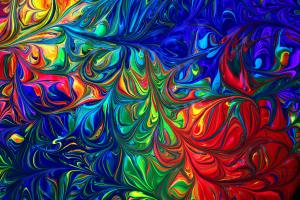 Psychedelic voyaging and experimentation has long become a distinct cultural movement. Born of the ecstatic, life-transforming experiences that commonly occur under the effect of psychedelics, it has become associated with ideas of ecological awareness, independent, free thinking, and progressive values of peace, anti-consumerism, human and indigenous rights. Such values are often taken to be the direct result of the transformative psychedelic experience, the fruits of deeply humbling and edifying experiences inspired by psychedelics.
Psychedelic voyaging and experimentation has long become a distinct cultural movement. Born of the ecstatic, life-transforming experiences that commonly occur under the effect of psychedelics, it has become associated with ideas of ecological awareness, independent, free thinking, and progressive values of peace, anti-consumerism, human and indigenous rights. Such values are often taken to be the direct result of the transformative psychedelic experience, the fruits of deeply humbling and edifying experiences inspired by psychedelics.
And yet, at times, when pondering psychedelics from a broader cultural perspectives one is confronted with the question of just how much of the culture revolving psychedelics is distinctly psychedelic, and how much of it is merely a reflection of independent cultural trends?
The question might seem strange or even unintelligible at first. We tend to assume that the ways in which psychedelics affect individuals around us represents their true and basically uniform character. When we and those surrounding us have a certain type of experience with these agents, we tend to assume that this experience is universal to them, that is intrinsic to their effect.
This essentialist approach, which in other contexts has been called pharmacologicalism, submits that psychoactives have discrete, definite and unchangeable effects – one drug cures addiction, while another treats depression, one is an aphrodisiac and the other helps anxiety.
While this approach is still popular within medical and pharmaceutical discourse, it actually has little to support it, and it is particularly mistaken when we enter the domain of psychedelics, where the central concept of set and setting makes us aware that effects of psychedelics are always context-dependent. Psychedelics have been described by Stan Grof and othes as non-specific agents, which mirror or amplify mindstates, rather than inducing specific types of states invariably. Psychedelic experiences are not uniform. They are heterogeneously produced by a assortment of elements such as personality, expectation and intention (set), and physical and social environment (setting), which determine how a specific psychedelic experience would play out.
This is true not only of individual experiences but of the set of psychedelic experiences taking place within a culture as a whole. Cultural values, which inform societies and their perception of reality, determine the collective set and setting conditions, which frame individual set and setting and shapes experiences with psychedelics. Taking a psychedelic within an indigenous culture where its use is consecrated and supported by a complete cosmological worldview that cherishes such experiences is very different than taking the same substance in a laboratory setting, with doctors interested in the psychochemical effects of the drug on the brain, to give one obvious example.
The values of psychedelics
In the syncretic, spiritualist, new-age culture that evolved around plant medicine, psychedelics are primarily associated with certain ideas that might be called progressive. Notions of psychedelics as aids for the attainment of more developed ecological awareness or of a more brotherly, peaceful view of human relations permeate much of psychedelic culture and its plant medicine offshoots.
By using entheogens, the conventional psychedelic wisdom goes, we become more conscious and aware, helping us develop a more enlightened view of certain matters of modern existence. We might become more aware of the links connecting all forms of life, and of the suffering of the planet, leading us to adopt a more ecologically oriented position, or we might have an experience of cosmic, unitive love, that would allows us to feel akin to social and national groups that we might normally have trouble feeling empathy towards. Still others might say that the use of plant medicine leads one back to their inner most reaches and away from the profane world of modern capitalism, contributing to a the development of a slower, simpler lifestyle.
The proposition that psychedelics could be used to help people realize their debt to the planet, the need for international peace and understanding, or the futility and destructiveness of consumer culture has been with us since the 1950s and it has never gone completely out of fashion within the psychedelic milieu. Just give the leaders of the world acid/ayahusca, the story goes, and their minds will be transformed.
However, is this really so? Are psychedelics really capable of universally triggering such value changes within individuals? We tend to assume that psychedelics cause people to develop slower, simpler, more peaceful, and ecological-minded behaviors and perspectives on life because that is what we tend to encounter around us. But how much of these reactions are the product of the psychedelic experience per se (if there is even such a thing), and how much of it is contingent on the culture in which this experience has developed in our modern world? The answer might be trickier than we assume.
A lesson from the 1960s
If we look back at the psychedelic culture of the 1960s we might discover that many of the characteristics people assumed to be inherent to psychedelic experiences in the 1960s were actually largely shaped by the cultural atmosphere of the time.
Back in the 1960s, for example, people tended to assume psychedelics go hand in hand with enhanced sexuality and with sexual promiscuity. Books with titles such as “The Sexual Paradise of LSD” promulgated LSD as the ultimate sexual experience, while erotic magazines featured images of naked women enveloped in luminescent kaleidoscopic forms. LSD high priest Timothy Leary promised the readers of playboy magazine that a woman having sex under the influence of LSD could have hundreds of orgasms in one love making session. Love making, argued Leary, was the whole point of the LSD experience.
From a contemporary perspective such claims might sound bizarre. Contemporary plant medicine, and even much of present psychedelic culture (e.g. the psytrance scene and psychonaut culture) is not particularly sexual. In fact, in most cases, sexuality seems to take a less prominent role in psychedelic culture than it does in mainstream culture – clothing and behavior seem generally modest in comparison to other realms of the culture (burning man festival being one obvious exception). In plant medicine circles, this is even more so, with sexual abstinence commonly practiced during and in the days surrounding plant medicine ceremonies. Viewed in perspective, it is clear that much of the connotation people made between psychedelics and sex in the 1960s was the byproduct of the sexual revolution that was taking place at the time, and that was readily connected with the counterculture and experimentation with new mind-altering drugs.
Another example would be the popular equation of psychedelic experiences with non-belligerent thought and behavior. If only the leaders of the world would take LSD they would quickly “banish war, poverty and famine,” argued Paul McCartney in the 1960s. Similarly, Allen Ginbserg’s first reaction to the mushrooms was to grab the phone and place an international phone call to John F. Kennedy, Chairman Mao and Nikita Khrushchev (then leaders of their respective nations) in order to settle all that nonsense about the bomb once and for all. Jefferson Airplane’s singer Grace Slick went even further, conniving to slip a drop of acid into Nixon’s cup of tea in order to convince him to withdraw American militaristic presence from Vietnam, and develop generally more enlightened views.
Still from a historical, cross-cultural perspective, such ideas seem awfully naive. After all, the indigenous use of hallucinogens for the purposes of dark sorcery is just about as well spread as its use for healing. Psychedelics have been used in belligerent, militant contexts in a number of occasions in history. In fact, some of their earliest enthusiasts were proto-fascists such as Albert Hofmann’s close friend the author Ernst Jünger. As for Nixon, it is far from certain that taking psychedelics would have transformed his perspective on the Vietnam war. If anything, we might learn from the example of American cold war strategist Herman Kahn who spent the duration of his acid experience plotting napalm bombing strategies over mainland China. From my own personal experience living in Israel and visiting weekend psytrance parties where thousands of young men who serve as part of the Israeli military experiment with psychedelics, I had ample opportunity to observe that psychedelics do not automatically change individuals into left-leaning, peace dedicated individuals
The properties of psychedelic experience are more variant, it seems, than many of us would like to assume. In LSD Psychotherapy, eminent psychedelic therapist Stan Grof goes as far as to argue that there is not a single effect of LSD which repeats universally across individuals. The effects of psychedelics are always relative to the person and the culture in which they become embedded.
Psychedelics from a cultural perspective
To understand why psychedelics manifest as they do in our culture, we need to reflect on some of the cultural fantasies that have been imposed on them since they arrived at the scene in the mid-twentieth century. When psychedelics arrived to the west and became popularized within the counterculture, many of the concerns and preoccupations of that counterculture as well as of the surrounding society have been projected onto these agents, as kinds of collective fantasies, which ended up shaping how people imagined and conceived of them. Psychedelics came to reflect the culture of that time, and the various ideals of that era such as individualism, peacefulness and liberated sexuality. From the perspective of time, some of these associations seem dated, while other continue to resonate in our modern understanding of psychedelics, not necessarily because they are universal (cross-cultural examinations often show otherwise) but because of the continuity of culture.
Disentangling the cultural from the psychedelic remains a delicate issue to be approached carefully and consciously. For example, a much cited 2011 study by MacLean et al. showed that a high dose of psilocybin under supportive conditions produces an increase in the core personality trait openness. The results of the study were justifiably celebrated, since no other study had previously demonstrated changes in personality in healthy adults after a singular event. Yet, should we construe the results study to mean that psychedelics increase openness? Of course not! Doing that would discard the relevance of set and setting. Already in 1963, Leary et al., were careful to note the results of their classic study “Reactions to Psilocybin” are not generalizable, and represent the effects of psilocybin in the specific set and setting conditions under which the study was done. Would a high dose of psilocybin increase openness with ISIS fighters in Syria taking it in a fundamentalist setting? Who knows? But evidence from cross-cultural examinations of hallucinogens, as the ones performed by Marlene Dobkin de Rios would suggest otherwise.
So how much of the way we view psychedelics is related to our distinct cultural set and setting and how much of it is inherent to the psychedelic experience itself?
It is not my intention to claim that none of these common beliefs about psychedelics are true. Indeed, some of them might be justified in some ways. Luke (2013) has written about the relationship of psychedelic experiences to eco-awareness, and while such effects might be contingent on certain types of set and setting, I could not find any conflicting evidence that would suggest that psychedelics might negate environmentalism. Perhaps there are universals in the psychedelic experience. Perhaps in some cases, the experience does make some individuals predisposed towards particular values. After all, it was specifically the openness trait that was changed in Maclean’s subjects and not other traits. And the logic of the notion that psychedelics tend to contribute to openness does make sense on many levels since these are substances that expose one to extraordinary realms of perception and open up possibilities of exploration. Other arguments about how psychedelics might promote individualist, or humanist-pacifist notions might be no less persuasive. Perhaps there are some values or ideas which the psychedelic experience naturally gravitates towards, even if not universally. This discussion need not be dichotomous, and possible answers need not be binary: pitting pharmacological essentialism vs. cultural constructivism.
There is much that still needs to be explored here. However, to understand the relationship between psychedelics and values, we need to more reflectively contemplate on their relationship with the culture. For too long we’ve undergone the error of assuming that certain features of the psychedelic community are there because they are inherent to the psychedelic experience. As psychedelics become increasingly prevalent as a cultural option it is time we adopted a more sophisticated approach to the question of psychedelics and their interaction with human culture.

